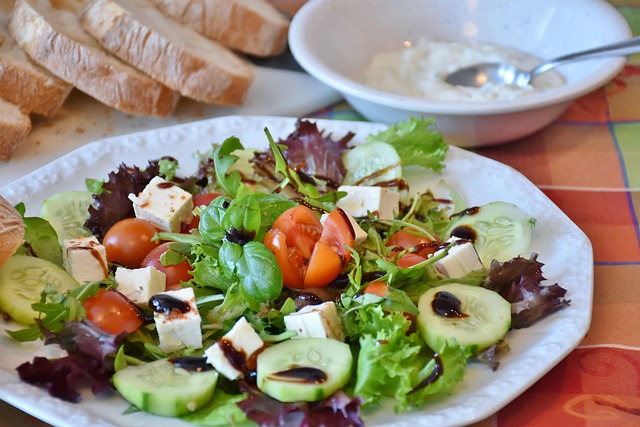Eugene, Oregon, boasts a thriving craft beer scene centered around local ingredients and sustainability. Breweries source fresh hops and regional fruits for unique seasonal beers, reflecting the area's agricultural heritage. Wine tasting experiences are also prevalent, showcasing Oregon's commitment to both beer and wine culture. The brewing process involves malting grains, mashing, fermentation, conditioning, aging, and bottling/kegging, with each step emphasizing quality and artistry, similar to the nuances of wine appreciation.
“Eugene, Oregon, is a hub of craft beer innovation, boasting a rich brewing heritage that attracts both locals and visitors. This article takes you on a journey through the art of Eugene’s craft beer brewing process, from the local ingredients that define its flavors to the intricate steps involved in creating each unique brew. Prepare for an immersive experience as we explore the science, artistry, and passion that goes into crafting the city’s renowned beers, offering a taste akin to a wine-tasting adventure.”
- Understanding Eugene's Craft Brewing Heritage
- The Local Ingredients Shaping Flavors
- From Grain to Malt: Milling and Mixing
- Fermentation: Science Meets Artistry
- Conditioning and Aging: Refining the Brew
- Bottling or Kegging: Sharing the Flavor
Understanding Eugene's Craft Brewing Heritage

Eugene, Oregon, has long been recognized as a hub for craft brewing innovation. The city’s rich brewing heritage is intertwined with its vibrant cultural scene and love for unique, locally-sourced products. This passion for quality beer has fostered a thriving community of brewers, many of whom draw inspiration from the region’s natural beauty and agricultural bounty.
The craft brewing process in Eugene often begins with exploring local ingredients—from carefully selected hops grown in nearby farms to fresh, regional fruits that add distinct flavors to seasonal beers. This focus on sustainability and freshness mirrors the city’s commitment to supporting local businesses and promoting ecological stewardship. Many breweries also offer wine tasting experiences, further emphasizing Eugene’s role as a cultural destination for beer and wine enthusiasts alike.
The Local Ingredients Shaping Flavors

In Eugene, Oregon, the craft beer scene is a testament to the region’s rich agricultural heritage and access to fresh, local ingredients. Brewers here take pride in sourcing their malts, hops, and yeasts from nearby farms, ensuring a unique flavor profile that reflects the area’s terroir. Much like wine tastings that highlight specific vineyard characteristics, Eugene’s brewers invite beer enthusiasts to explore the nuances of their brews, often featuring locally-grown varieties known for their distinct aromatic and taste qualities. This commitment to using local ingredients not only supports the region’s economy but also allows brewers to craft beers that capture the essence of Oregon’s vibrant natural landscape.
From Grain to Malt: Milling and Mixing

The craft beer brewing process begins with a journey from grain to malt, where the magic happens through careful milling and mixing. In Eugene, Oregon, brewers start by selecting high-quality grains, such as barley, wheat, or rye, which are then milled or crushed to expose their inner starches. This step is crucial as it prepares the grains for conversion into fermentable sugars during the mashing process.
After milling, the grains are mixed with hot water in a process known as “mashing.” This combination creates a slurry called mash, which allows enzymes to break down the complex carbohydrates into simpler sugars, akin to tasting the subtle nuances of a fine wine. The temperature and duration of this stage play a pivotal role in determining the flavor profile of the final beer, much like a sommelier carefully curating a wine-tasting experience.
Fermentation: Science Meets Artistry

Fermentation is a crucial and complex process in craft beer brewing, where science meets artistry. It’s akin to a delicate dance between yeast, sugars, and other ingredients, resulting in the transformation of a simple mixture into a flavorful elixir. Much like wine tasting, where the senses are engaged to discern nuances in aroma, taste, and texture, the art of fermentation requires a keen eye for detail and a deep understanding of microbial activity.
Craft brewers meticulously control temperature, oxygen levels, and timing to encourage the desired fermentation pathways, leading to unique beer styles. This process isn’t just about producing alcohol; it involves creating complex flavors, aromas, and even subtle textures that define each beer. Just as sommeliers appreciate the terroir and vintage of wines, craft beer enthusiasts celebrate the intricate balance of ingredients and processes that transform a fermenter’s contents into a truly exceptional brew.
Conditioning and Aging: Refining the Brew

After the beer has been fermented, it enters a crucial phase known as conditioning and aging. This process allows the flavors to meld together, much like a winemaker carefully nurtures their wine during the aging process in oak barrels. In craft breweries, this can involve a variety of techniques, from simple bottle conditioning where yeast and sugars are added to create carbonation and subtle complexities, to more advanced methods using stainless steel tanks or oak barrels to impart unique flavors and aromas. The duration of this stage varies depending on the style of beer; lighter ales may only age for a few weeks, while stouts and porters often benefit from months of slow maturation, similar to how a fine wine is aged to perfection. Just as sommeliers carefully select different types of wine glasses for specific wines, brewmasters choose appropriate vessels and conditions to ensure the beer develops its intended characteristics.
Bottling or Kegging: Sharing the Flavor

In the final stages of the brewing process, craft beer producers in Eugene, Oregon, face a crucial decision: to bottle or keg their creation. This choice is more than just logistical; it directly impacts how consumers will experience the beer’s unique flavors and characteristics. Bottling, for instance, offers a classic touch, appealing to traditionalists who appreciate the ritual of unscrewing a cap to reveal the brew’s aroma and taste. It also allows for longer shelf life, enabling breweries to distribute their products farther and wider.
On the other hand, kegging provides a more modern and dynamic approach, popular among craft beer enthusiasts who frequent local taprooms and bars. Kegged beer maintains its freshness for longer periods when served directly from the tap, often showcasing vibrant carbonation and enhanced flavors. This method is ideal for breweries aiming to provide an immersive experience akin to a wine tasting event, where each sip tells a story of precision brewing and innovative ingredients.






